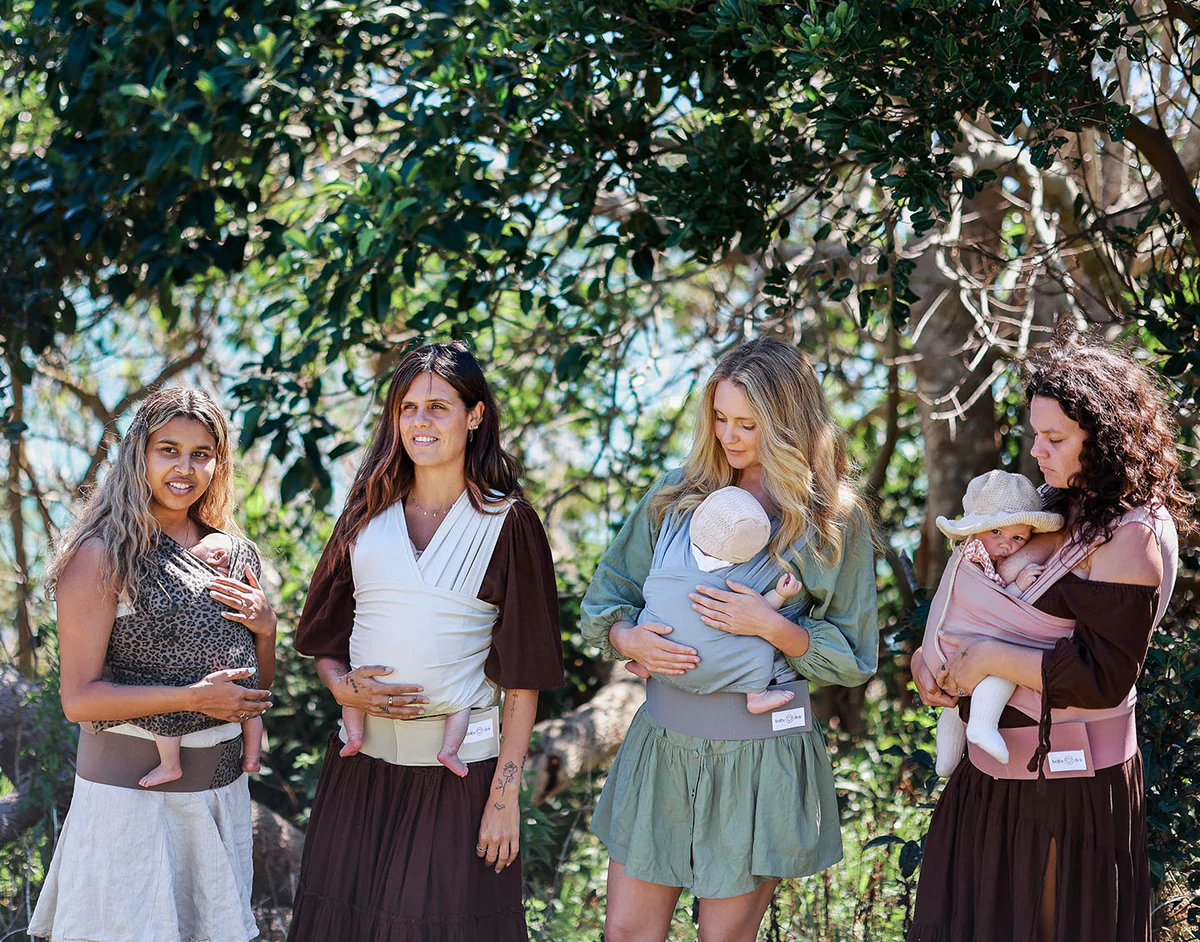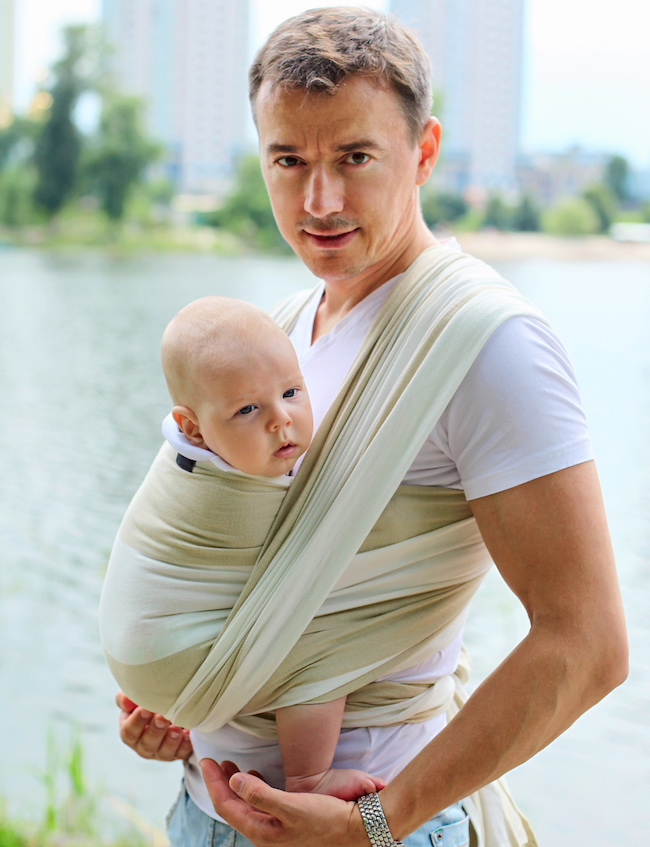Media kindly brought to you by BabyDink
As a new parent, one of the most cherished experiences is holding your baby in your arms while nursing. From the first moment of meeting your newborn in the delivery room to burping them over your shoulder after a feed, these moments are ones we hold close to our hearts. Babies yearn for the bonding feelings of being held close and cuddled because it replicates their secure environment in the womb, where they are constantly surrounded by the comforting warmth and movements of their mother’s body.
As your newborn grows and you adapt to a busy schedule, you may find that holding your infant in two arms is not always possible. This is where using a baby wrap, sling, or carrier can be a game-changer. It allows you to be hands-free while keeping your baby close, providing a sense of security and comfort for both you and your baby. With less stress and a greater sense of peace, it’s no wonder that napping in a babywearing carrier is the go-to method for putting certain infants to sleep.
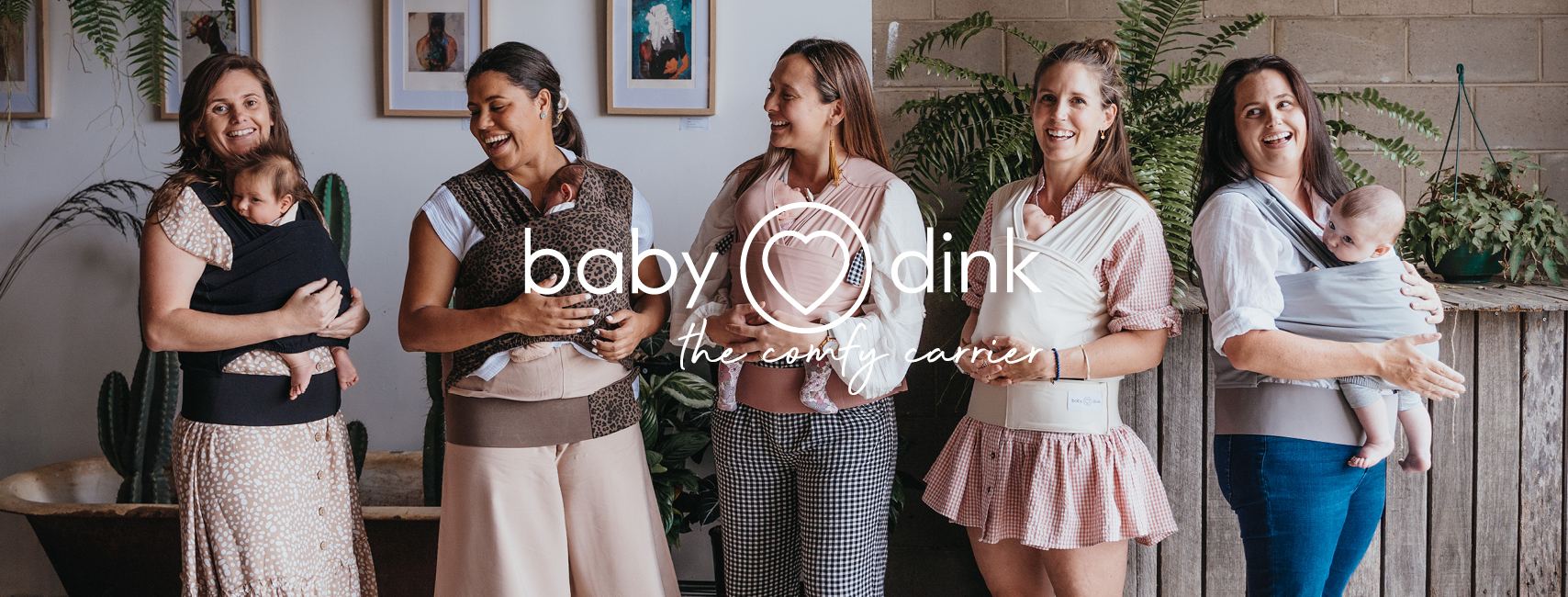
Advantages of babywearing:
Babywearing, or carrying your baby in a baby carrier or wrap, has numerous benefits for both baby and parent. Here are some of them:
Benefits for baby:
- Providing security and comfort: Being carried close to a parent’s body can help babies feel secure. This can be especially helpful for newborns adjusting to life outside the womb.
- Supports healthy physical development: Carrying a baby in an appropriate carrier can promote healthy physical development by allowing the baby to maintain a natural position that supports the spine and hips.
- Can reduce crying and fussiness: Studies have shown that babies who are carried in a carrier for at least three hours a day cry less and are less fussy than those who are not.
- Promotes bonding: The close physical contact that comes with babywearing can help parents and babies form a strong bond.
- Keep Babies’ Hips Flexed When a baby is born, its hip joints are yet to be developed and are soft and flexible. It takes about six months for these joints to strengthen and become stable. Infants are more likely to develop hip dysplasia due to their pliable bones and ligaments. This occurs when there is a misalignment or abnormal shape of the ball and socket of the hip joint. Having your baby in a carrier for long daily periods requires a baby carrier that correctly positions its hips. Your baby’s thighs should be supported in the carrier’s back.
- Supports healthy respiratory development: Babywearing encourages babies to maintain an upright position which can improve their breathing, especially in premature infants or those with respiratory issues.
- Enhances cognitive development: The close physical contact and stimulation that comes with babywearing can help babies develop their cognitive skills and promote brain development.
- Provides a sense of routine: Babywearing can help establish a routine for babies by providing a predictable movement pattern and comfort.
Benefits for parents:
- Keeps hands free: With a baby in a carrier, parents can keep their hands free to do other things, such as household chores, shopping, or caring for other children.
- Promotes mobility and exercise: Carrying a baby in a carrier can give parents a low-impact workout and make it easier to get out and about. It’s an excellent way to keep your baby close while being productive.
- Enhances bonding: Babywearing can help parents feel more connected to their babies and can also provide opportunities for skin-to-skin contact and eye contact.
- Can reduce postpartum depression and anxiety: Some studies have suggested that babywearing may help reduce symptoms of postpartum depression and anxiety in mothers.
- Encourages sleep: Babywearing has been established as a scientifically-supported technique for inducing sleep. The close physical contact and soothing motion provided by the parent while wearing the baby can help calm the infant and promote a sense of security, leading to more restful sleep. This method effectively reduces the duration and frequency of crying and fussiness in infants.
- Easy to breastfeed: Baby carriers allow for discreet and convenient breastfeeding, making it easier for parents to nurse their babies in public or on the go.
- Reduces back pain: Using a baby carrier that distributes weight evenly can help reduce back pain for parents, especially in the early postpartum period when their bodies are recovering from childbirth.
- Convenient for travel: Carrying a baby in a carrier can make travelling more accessible by allowing parents to easily navigate crowds and move through airports or other transportation hubs.
- Saves money: Babywearing can be a cost-effective alternative to purchasing a stroller or other baby gear, especially for parents who prefer eco-friendly and sustainable options.
Proper babywearing is essential to ensure the safety and comfort of both the parent and the child. By following safe babywearing guidelines, parents can choose the most suitable baby carrier that promotes closeness and convenience. Kiddipedia has partnered with BabyDink, an industry leader, to provide the best babywearing tips and guidelines.
BabyDink has established itself as a prominent brand in the world of babywearing, offering practical and comforting solutions to new parents seeking a deeper connection with their babies.
BabyDink’s carrier is infused with love and designed with simplicity, safety, and nurturing, setting a high standard in the industry. What sets BabyDink apart from traditional carriers is its ease of use, earning it the nickname “no wrap wrap.” This game-changing carrier can be worn like a top, providing a snug and secure fit for your baby without complicated wrapping processes or fiddly buckles and clips.
Through BabyDink, parents can enjoy a stress-free and hands-free experience while bonding with their babies. The carrier’s simplicity makes it easy to wear and comfortable for you and your little one. You’ll feel the warmth of your baby’s body against yours, and the skin-to-skin contact will provide an intimacy that is hard to match. With BabyDink, you’ll find joy and peace of mind, knowing that you have the best industry leaders at your side, helping you and your baby feel closer than ever.
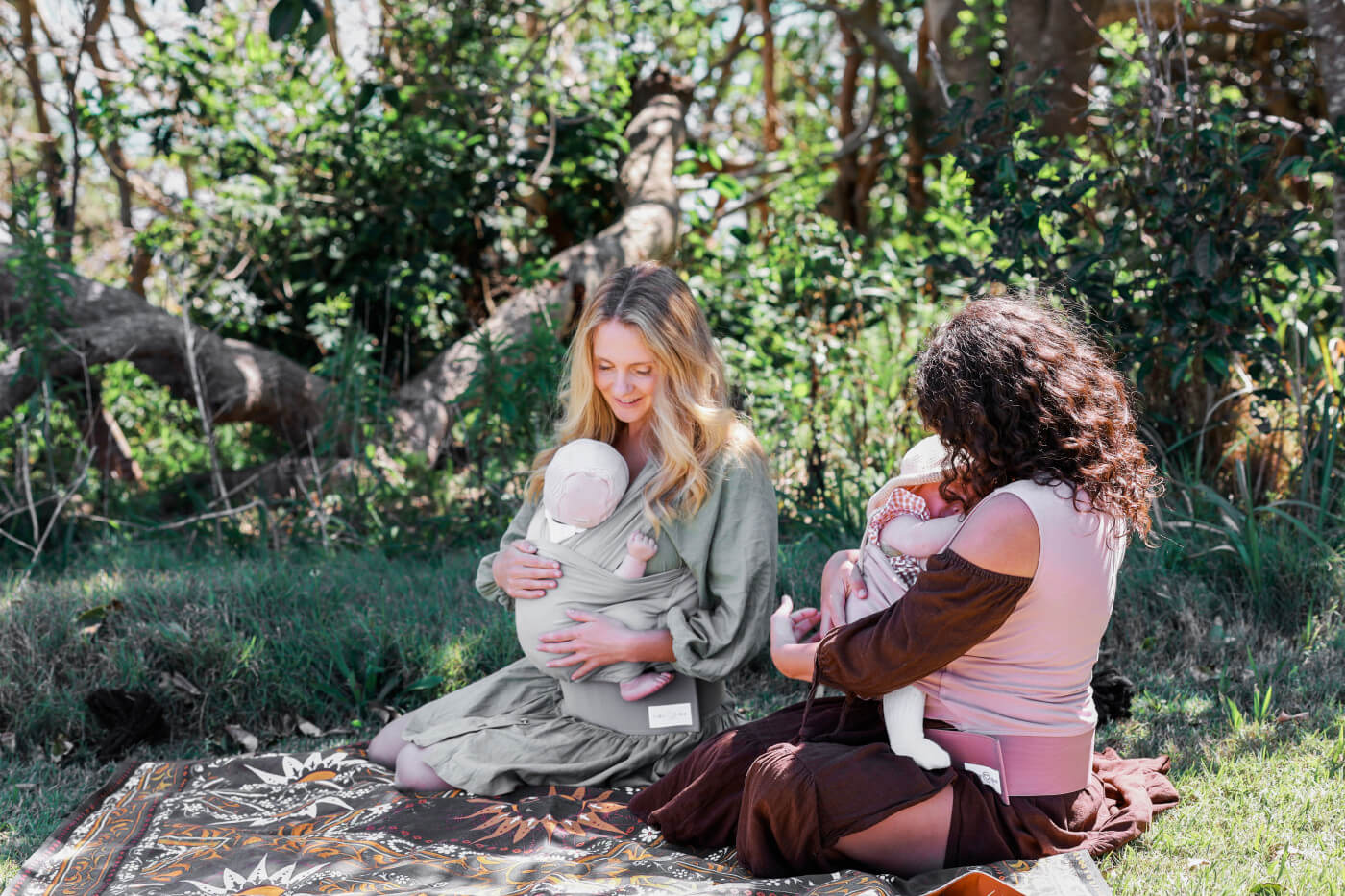
Here are their Baby Wearing Tips and Guidelines
- Safety Standards
It is always recommended to follow the TICKS rules for safe BabyWearing. TICKS is a set of rules created by the UK Sling Consortium to help parents’ babywear safely.
T: TIGHT: Your baby carrier should be tight enough to hold your baby close to you, as this will be most comfortable for you both. It must provide the proper support that is tight enough with a secure fit. For the baby’s comfort and protection, the carrier should firmly hold them in position, close to your body. Your infant’s breathing may be compromised if they are allowed to slump. Using your carrier safely to support your baby with at least one arm is recommended.
I: IN VIEW AT ALL TIMES: Babies who have yet to learn to control their heads and bodies on their own need the stability of a front carry, but this can restrict their breathing if you’re not careful. Ensure your baby’s face remains uncovered, and you can always see your baby’s face. Ensure your baby’s airway is not compressed by covering her face or tucking her chin. Suffocation is especially dangerous for premature infants, infants younger than four months, and infants with a cold or other respiratory illness.
C: CLOSE ENOUGH TO KISS: Your baby’s head needs to be as close to your chin as it is comfortable and close enough to your face to be kissed on the head while worn. Make sure your baby is positioned high if you’re using a sling, wrap, or carrier. Slumping in a baby carrier, which can happen if the infant is worn too low, can result in the baby’s head falling to its chest. Finally, it is more challenging to check your baby’s face and head position the lower they are.
K: KEEP CHIN OFF CHEST: A baby should never be curled so their chin is forced onto their chest, which can restrict their breathing. Keeping your infant in a nice, upright position when in the carrier is essential. The baby’s airway can remain straight and allow for unrestricted breathing. Your baby can better view their surroundings when you put them in this position. Regularly check on your baby for any signs of discomfort.
S: STRAIGHT AND SUPPORTED BACK: Ensure your baby’s back is straight when facing you. There should be no space between the adult’s body and the infant’s belly and chest when carrying an infant, as this can restrict the infant’s airflow. In an upright carrier, a baby should be held comfortably and close to the wearer so their back is supported in its natural position and their tummy and chest are against you.
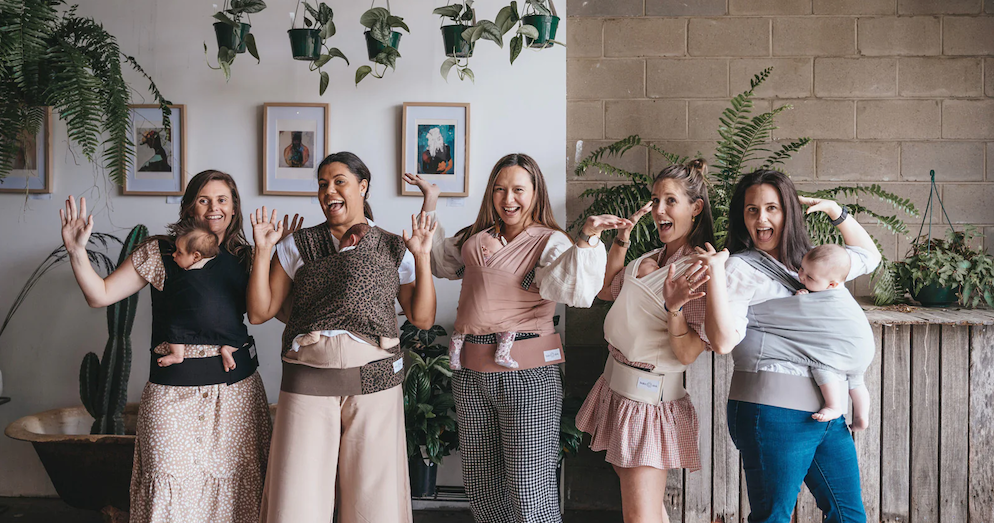
- Safety first
When it comes to babywearing, there’s a right and wrong way to do it. Unfortunately, the difference between what’s safe and what isn’t can sometimes be subtle. That’s why ensuring that your baby carrier is the correct size, selection, and wear is crucial to keep your little one safe.
Most safety concerns revolve around keeping a baby’s airway clear and supporting their back and neck. Improper use of a baby carrier can be hazardous for your baby. According to the Australian Competition and Consumer Commission (ACCC), if a carrier is worn incorrectly or is not the correct type of sling for your baby, it can lead to rapid suffocation if your baby’s face is pressed against fabric or the wearer’s body, slow suffocation if your baby is lying in a ‘c’ shape position with the chin on the chest, or even falls.
That’s why choosing a carrier ensures a secure fit is essential. The BabyDink Carrier is an excellent option for busy parents who want to keep their baby safe while enjoying the benefits of babywearing.
BabyDink is the Authentic ‘No-Wrap’ Baby Carrier!
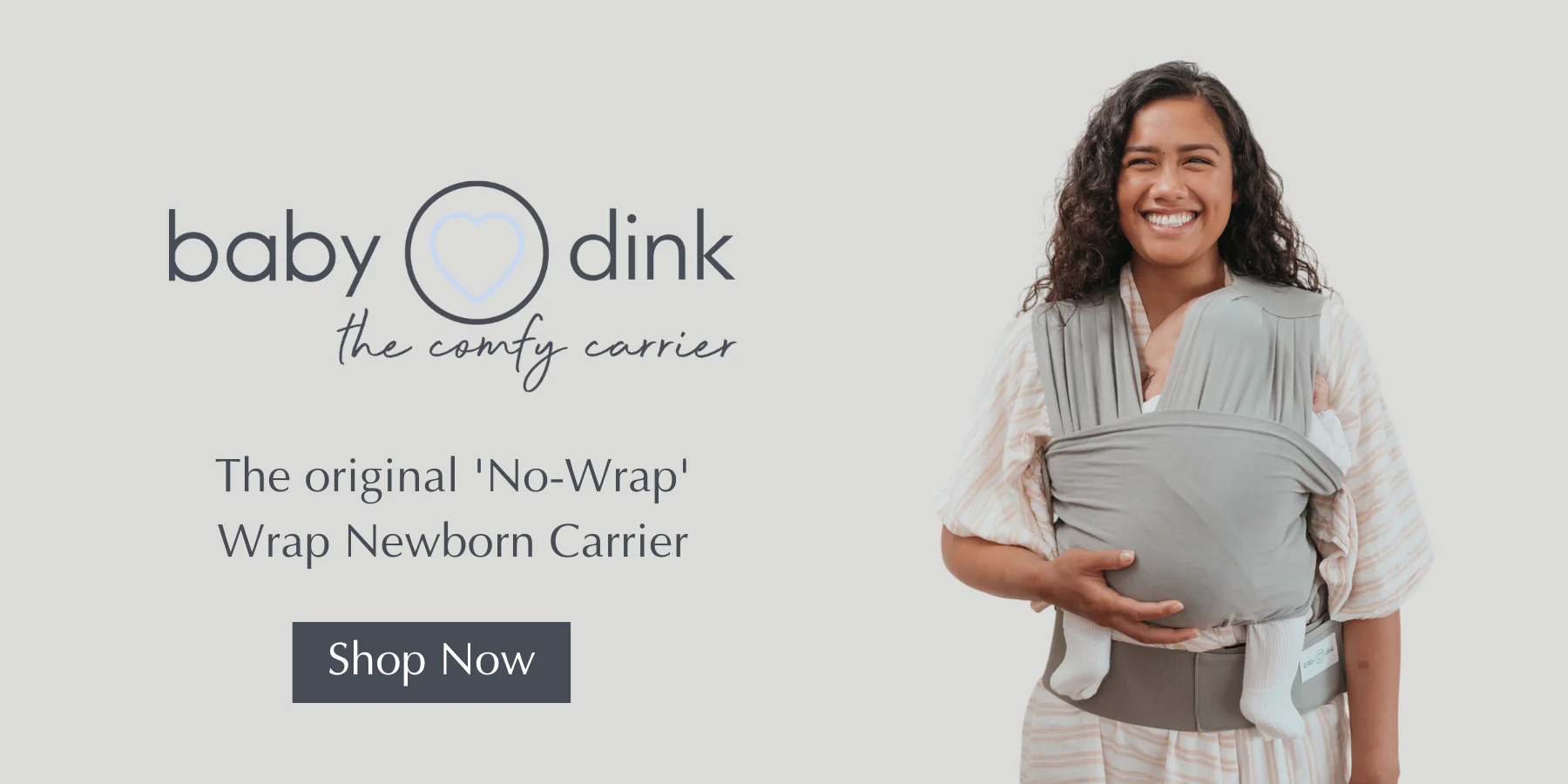
BabyDink is a wrap carrier that can be worn like a top and provides all the benefits of a wrap carrier. The design is pre-wrapped for a consistent, comfortable fit. It’s breathable, hypoallergenic organic cotton certified by the Global Organic Textile Standard (GOTS).
To wear it, slip it on like a T-shirt. You won’t have to learn to use complicated buckles, clips, or wrapping mechanisms. BabyDink is adjustable to fit your unique body shape, so your little one’s weight is distributed safely and comfortably across your entire frame. With a buttery soft feel, it’s seriously supportive and comfy for you and your baby. The product of Australia uses organic cotton fabric that has been verified as safe by the Global Organic Textile Standard (GOTS). You can use it if your baby is at least six months old.
You can stop looking for frustrating origami guides now. Thanks to the pre-wrapped fabric straps, the baby can be secured in the carrier in three steps. Your newborn will feel safe and secure within a few minutes next to your chest, and you’ll have both hands free to tend to life’s other pressing concerns.
To view BayDink’s full collection, visit: babydink.com.au


